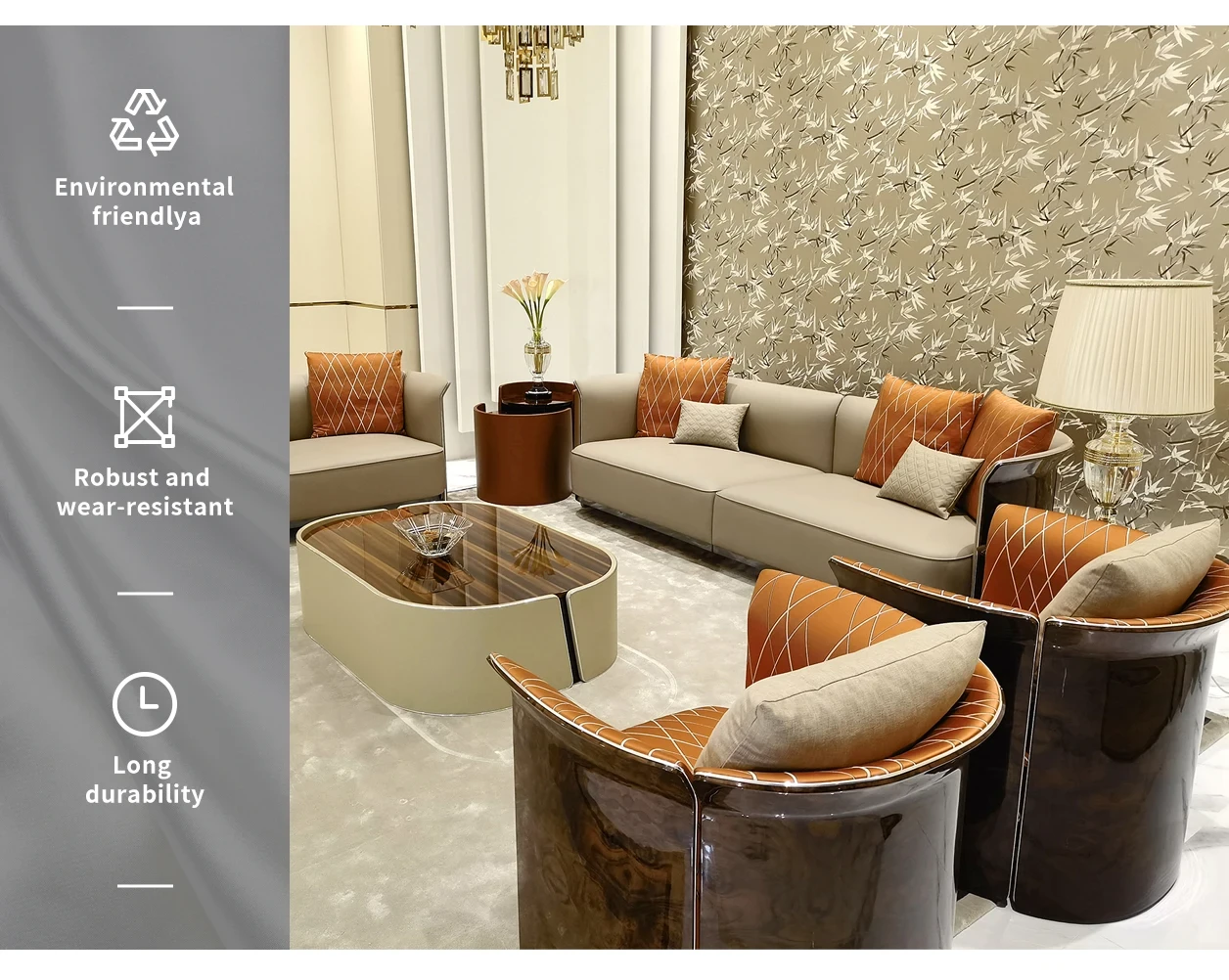In an era where environmental consciousness is paramount, the choices we make in furnishing our homes can significantly impact the planet. Sustainable and eco-friendly furniture options have emerged as a responsible choice for those seeking to reduce their carbon footprint and contribute to a healthier environment. This article will guide environmentally conscious consumers through the process of selecting eco-friendly living room furniture and offer tips for creating a stylish and sustainable living room space that minimizes environmental impact.
Understanding Sustainable Furniture
Sustainable furniture refers to items crafted with materials and processes that prioritize environmental responsibility. This encompasses the entire lifecycle of the product, from material sourcing to production, and eventual disposal. Key features of sustainable furniture include:
Materials Matter: Opt for furniture made from responsibly sourced materials, such as FSC-certified wood or recycled materials. Look for labels or certifications that indicate adherence to sustainability standards.
Durability and Longevity: Sustainable furniture is designed for longevity, reducing the need for frequent replacements. Durable materials contribute to the lifespan of the product, minimizing waste.
Low Environmental Impact: Choose furniture produced with eco-friendly manufacturing processes that minimize resource consumption and emissions. Consider pieces made with low-impact finishes and adhesives.

Benefits of Eco-Friendly Furniture
Choosing sustainable furniture offers numerous benefits:
Reduced Carbon Footprint: Sustainable furniture often involves minimal transportation distances and lower energy consumption during production. Choosing locally sourced materials further reduces transportation-related emissions.
Preservation of Natural Resources: By opting for recycled or reclaimed materials, you contribute to the conservation of forests and reduce the demand for raw resources.
Healthier Indoor Environment: Eco-friendly furniture is often free from harmful chemicals and toxins, creating a healthier living space. Look for pieces with low or zero VOC (volatile organic compound) finishes.
Tips for Creating a Stylish and Sustainable Living Room
Creating a stylish and sustainable living room involves thoughtful selection of materials, designs, and practices. Here are some tips to help you achieve this:
1. Choose Sustainable Materials
When selecting furniture, prioritize materials that are renewable, recycled, or responsibly sourced. Some excellent options include:
Reclaimed Wood: Using wood from old buildings or furniture reduces the need for new timber and gives a second life to valuable materials.
Bamboo: A rapidly renewable resource, bamboo is strong, durable, and grows quickly without the need for pesticides.
Recycled Metal and Plastic: These materials reduce waste and the demand for new raw materials. Look for furniture made from recycled aluminum or plastic.
2. Opt for Durable and Timeless Designs
Invest in high-quality, durable furniture that will stand the test of time. Avoid trendy pieces that may go out of style quickly and require replacement. Timeless designs not only reduce waste but also ensure that your living room remains stylish for years to come.
3. Shop Secondhand
Buying secondhand furniture is a sustainable choice that reduces waste and often provides unique, high-quality pieces. Visit local thrift stores, antique shops, or online marketplaces to find pre-owned furniture that fits your style.
4. Consider Multi-Functional Furniture
Multi-functional furniture, such as sofa beds or storage ottomans, maximizes space and reduces the need for multiple pieces. This approach is particularly useful in smaller living rooms and contributes to a minimalist, eco-friendly aesthetic.
5. Prioritize Non-Toxic Finishes
Ensure that your furniture is finished with non-toxic, low-VOC paints, stains, and adhesives. This not only benefits the environment but also improves indoor air quality, making your home healthier.
6. Incorporate Natural Elements
Enhance your living room with natural elements such as plants, which improve air quality and add a touch of nature to your space. Choose organic textiles for cushions, rugs, and curtains to further reduce your environmental impact.
Conclusion
Choosing sustainable and eco-friendly furniture is a meaningful step towards creating a greener and more responsible home. By understanding the principles behind sustainable furniture and making informed choices, you contribute to a collective effort to preserve our planet for future generations. Embrace the beauty of eco-conscious living and let your home be a testament to a commitment to sustainability.




 Last
Last
